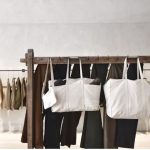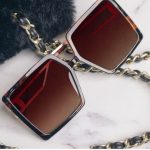Layering accessories isn’t just about piling on jewelry and hoping for the best—it’s about intentional styling that adds depth, personality, and polish to any outfit. When done right, accessories can turn a simple look into a head-turning ensemble. The key? Balance, proportion, and a little fashion fearlessness.
Whether it’s stacking necklaces, mixing metals, or pairing statement pieces with subtle staples, here’s how to master the art of accessory layering without veering into chaotic territory.
10 Smart Ways to Layer Accessories Like a Fashion Pro
1. Start with a Focal Point
At the heart of any well-layered accessory look is a single standout piece—the anchor that grounds the entire aesthetic. This “hero item” sets the tone for everything else and creates a clear point of visual interest. Whether it’s a bold chain necklace, a sculptural belt, or an oversized statement ring, this piece should draw the eye immediately and establish the mood of the ensemble.
After establishing a focal accessory, surround it with supporting pieces that elevate rather than compete. A bold gold chain, for instance, pairs well with slim chokers or subtle pendants to create layered harmony. A statement belt over a blazer is best balanced with understated earrings and a clean-lined bag. Achieving the right proportions and knowing when to pull back allows the standout piece to take center stage while the rest quietly complements. The result is a look that feels intentional, refined, and visually balanced—never excessive.
2. Mix Textures, Not Just Metals
While mixing metals adds edge and modernity, the real secret sauce of pro-level layering is texture contrast. Incorporating a variety of materials—smooth, rugged, soft, or shiny—adds depth and visual interest to any outfit. Think of it as a tactile symphony: pairing a raw leather cuff with shimmering bangles creates a juxtaposition that reads as both intentional and dynamic.
Pair beaded bracelets alongside a brushed metal watch, or drape a silk scarf over a structured crossbody bag with chain detailing for added contrast. These unexpected texture pairings draw the eye and highlight intricate details, transforming even a basic outfit into something visually rich and editorial. Mixing materials adds layers of interest, making the overall styling feel purposeful and multidimensional rather than incidental.
3. Vary Lengths and Sizes
A key principle in accessory layering is incorporating a variety of scales—considering length, width, and overall proportion. When all pieces are too similar, the look can appear static, but mixing sizes creates flow and visual interest. For necklaces, begin with a close-fitting base like a choker or short chain, then layer progressively longer pieces such as a mid-length pendant and a long lariat or statement necklace. This gradual build adds depth, guides the eye naturally, and ensures each layer stands out without overlapping or competing.
The same rule applies to bracelets, rings, and even earrings. When stacking rings, combine delicate bands with one standout piece on another finger to avoid a crowded look. Use wide cuffs or chunky bangles paired with slimmer pieces to create contrast on the wrist. Earrings can follow suit—try a bold statement pair with minimal studs in second or third piercings, or mix oversized hoops with a simple cartilage cuff. Varying lengths and sizes turn a pile of accessories into an intentional, styled composition.
4. Balance Bold With Bare
In the art of layering, subtlety can be the strongest statement. Choosing what to leave out is just as impactful as what’s included, often enhancing the presence of standout pieces. Introducing visual breathing room brings harmony to a look, letting bold accessories command attention without overwhelming the ensemble. A striking bracelet stack, for example, appears more refined when contrasted with rolled-up sleeves and unadorned hands—where the lack of rings or a watch becomes a deliberate frame that draws the focus. Similarly, when highlighting bold earrings—such as large hoops, chandelier styles, or sculptural designs—it’s effective to forgo a necklace and opt for a pulled-back hairstyle.
This approach draws attention directly to the earrings, creating a clean and intentional focal point. Much like curating a well-designed space, standout pieces benefit from breathing room. Thoughtful editing in accessory layering isn’t about stripping things back—it’s about amplifying each element’s impact by allowing it the space to stand out.
5. Play With Themes and Color Stories
The most memorable layered accessory looks feel cohesive—not because they’re perfectly matched, but because they follow an aesthetic thread. Whether it’s a mood, a color palette, or a recurring motif, having a clear theme helps all the individual pieces work together like chapters in the same book. This can mean building a look around earthy tones like terracotta, olive, and sand, paired with materials like leather, wood, and woven fibers for a grounded, boho-chic vibe. Or it could be a jewel-toned glam moment, layering emerald green earrings with gold cuffs and a velvet clutch to evoke richness and drama.
Don’t underestimate the power of color theory here. Analogous colors (those next to each other on the wheel, like blues and greens) create harmony, while complementary colors (like red and teal, or mustard and violet) add a bold edge. Themes can also revolve around decades (think ‘90s grunge chains and chokers) or elements like celestial charms, floral motifs, or art deco geometry. Even when mixing prints or textures, a clear throughline makes the final look feel intentional, not improvised.
6. Stack Outside the Box
Accessories aren’t just jewelry—they’re everything extra that brings an outfit to life. And the most exciting looks happen when those extras interact in creative, unexpected ways. A belt over a blazer? Still iconic. But take it further: try layering two belts—one leather, one chain—for contrast. Pair a structured hat with drop earrings for a polished-meets-playful moment, or layer two handbags (think a shoulder bag with a belt bag) to blend form and function with editorial flair.
Fashion-forward dressers are also layering accessories in ways that challenge expectations. Tuck sunglasses into a printed scarf worn bandana-style, or let contrasting socks peek out from platform heels or open-toe sandals for that street-style edge. Even gloves, tights, and arm warmers are part of the mix—especially when combined with oversized cuffs or rings worn over mesh. The rule? There are no rules. Accessories that “don’t belong” together often create the most unforgettable looks. Style isn’t about staying in the lines—it’s about knowing when to color way outside them.
7. Confidence Is the Final Layer
Stronger than any pearl strand or polished gold accent, confidence serves as the unifying force behind a fully realized look. Without it, even the most carefully styled layers can fall flat. Intention gives accessories their impact—bold ring stacks gleam with purpose, and oversized belts over tailored pieces command attention through presence alone.
Style operates beyond fixed rules, functioning as a visual language shaped by instinct and individuality. Confidence enables experimentation, infuses unconventional pairings with clarity, and transforms accessories into statements rather than distractions. Whether composed of vintage treasures or modern pieces, a well-accessorized look gains its power through assured expression. Confidence becomes the invisible thread that ties every element into a cohesive, elevated narrative.
8. When in Doubt, Edit Ruthlessly
Layering is an art form—but even great art knows when to pause. The most fashion-forward looks have clarity and intention, not just volume. That’s where editing comes in. After building an accessory look, take a moment to step back, assess the balance, and—if something feels too busy or overworked—remove one piece. Not because less is better, but because sometimes, less allows the rest to shine.
Think of this as the final brushstroke, not a retraction. A great look doesn’t require every piece in your jewelry box—it just needs the right ones, worn at the right time. Editing helps maintain proportion, keeps the look from tipping into costume territory, and ensures each accessory gets the spotlight it deserves. It’s not minimalism—it’s mastery. The quiet confidence to say, “This is enough,” is what separates the casually stylish from the effortlessly iconic.
9. Don’t Fear the Metal Mix
Previously considered a fashion mistake, mixing metals has become a hallmark of sophisticated, editorial styling. Sticking to just one metal tone can often feel overly uniform or lack depth, whereas combining gold, silver, rose gold, and gunmetal adds richness, contrast, and visual texture. The interplay between has become a hallmark of sophisticated, editorial styling.
Sticking to just one metal tone can often feel overly uniform or lack depth, whereas combining gold, silver, rose gold, and gunmetal adds richness, contrast, and visual texture. The interplay between warm and cool finishes gives accessories a more curated and collected look, conveying a sense of intentional layering rather than overly matched coordination.
Sense of intentional layering rather than overly matched coordination. A well-executed metal mix begins with a dominant tone—gold for warmth, silver for a cooler edge—and builds upon it with accent metals. Silver hoops alongside a gold pendant or a brushed steel watch paired with rose gold bangles add balance and intrigue. Rings provide a versatile canvas for this mix: gold bands beside silver signets, accented with hammered bronze or oxidized finishes. Variation in texture—matte, glossy, brushed, or antiqued—further enhances depth and cohesion. When balanced with intention, mixed metals elevate accessories from functional detail to standout feature.
10. Eye Accessories: The Power of Sunglasses and Frames
Eyewear may be functional, but this season, it’s also doing the most—and that’s exactly the point. Sunglasses and prescription frames have gone from afterthought to statement-maker, becoming a crucial part of any layered look. While eyewear serves a practical purpose, it has emerged this season as a bold style statement in its own right. Both sunglasses and optical frames have shifted from subtle add-ons to key elements in a layered ensemble. Whether worn traditionally, tucked into a neckline, or casually placed atop the head, the right pair instantly brings character—be it edge, elegance, or whimsy—without relying on additional accessories.
Retro silhouettes like oversized cat-eyes, aviators with gradient lenses, and geometric wire frames evoke major throwback cool, while colored lenses bring a punch of personality to neutral outfits. And don’t sleep on eyeglasses—translucent acetate frames or embellished temples pair beautifully with sculptural earrings or a strong lip color for a chic, desk-to-dinner vibe. They’re the bridge (literally) between beauty and fashion, and when layered right, they can shift a whole look from “styled” to styled and seen.
How to Layer Accessories Like a Style Icon
Layering accessories is both an art and a playground—structured enough to look polished, but flexible enough to let personality shine through. With a little experimentation and a lot of attitude, even the simplest outfit can transform into something unforgettable.


